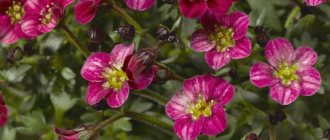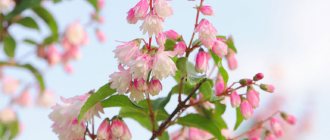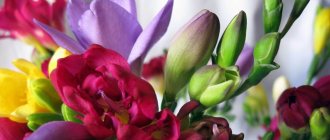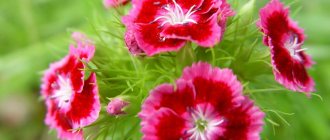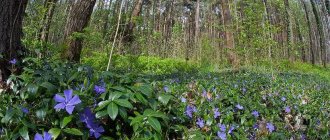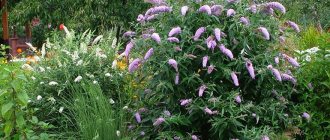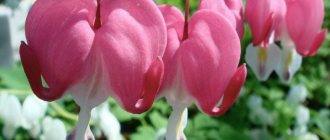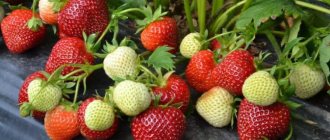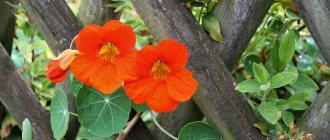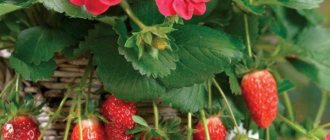Fritillaria ruthenica Wikstr. Category and status: 3 b - rare species. A brief description of.
Herbaceous bulbous polycarpic 15-70 cm high.
The leaves are opposite or alternate, flat, linear, with a thin spirally twisted apex. The bulb is flattened, up to 1 cm in diameter. Ephemeroid. It blooms in April-May, bears fruit in late May - early June, after which the growing season quickly ends. It reproduces by seeds and vegetatively, forming daughter bulbs and adventitious brood buds (1-3). Spreading.
In Russia, the species is found in the Moscow region.
(south), in all regions of the Central Black Earth Region (3): Belgorod, Bryansk, Voronezh, Kaluga, Kursk, Lipetsk, Oryol, Tambov, Tula); in the Volga region in the Volgograd, Nizhny Novgorod (collected once near the village of Vad) (4), Penza, in the Rostov, Ryazan, Samara, Saratov, Ulyanovsk regions, in the Republics of Mordovia (east) (5), Tatarstan (southeast) ( b); in the Southern Urals in the Republic of Bashkortostan (south), in the Orenburg, Chelyabinsk (south, Troitsky and Oktyabrsky districts) regions; enters Western Siberia (south of the Kurgan region on the Tobol River) (7). According to old instructions, it was recorded in the Stavropol Territory (Nevinnomyssk) (8). Described from the foothills of the Caucasus. Outside Russia, it is found in most of Ukraine (9) and northwestern Kazakhstan (9-10). Features of ecology and phytocenology.
Type of forest-steppe and steppe zones.
It grows on steppe and meadow slopes, light sparse forests, steppe edges and clearings, shrubs, and steppes. Demanding on soil richness, grows on calcareous soils (1, 2). Number.
Population sizes vary.
In some places the species is abundant and dominates the herbage of sparse mountain oak forests (11). It disappears near large populated areas (5.12). State of local populations.
In many regions, the number has decreased due to habitat disturbance and collection for bouquets, especially near populated areas.
In the Republic of Mordovia until the middle of the 20th century. The species was often found in suburban forests, but is now on the verge of extinction. The plant is found in small groups (3-7 individuals). The total number is no more than 30 copies. (5). In 2005, in two of the five known locations in Tatarstan, the number was 90 individuals (b). In the Tambov region. in two populations 1.5 thousand individuals were recorded, in nine others - on average 100 (13). In the Ryazan region, populations in the Miloslavsky district have probably disappeared; a stable and large population remains in the Korablinsky district (14). In the Penza region. populations are small in area and density of individuals (15). Limiting factors.
Deforestation, plowing of steppes and meadows, spring fires, grazing, trampling.
An ornamental plant that suffers from picking. Security measures taken.
It was included in the Red Book of the RSFSR (1988).
The species is included in the Red Books or is protected in all federal subjects where it grows. Protected in 10 nature reserves: Belogorye, Voronezhsky, Galichya Gora, Zhigulevsky, Orenburgsky, Volga Forest-Steppe, Prioksko-Terrasny, Khopyorsky, Central Chernozemny and Shulgan-Tash; in the Samarskaya Luka NP (16), the Arkaim museum-reserve in the Chelyabinsk region, as well as in a number of regional 00PT (17,18). Necessary security measures.
Prohibition of plant collection.
Monitoring the state of species populations. Creation of new 00PT in places where the species grows. Cultivation possibilities.
Cultivated in many botanical gardens in Russia: Voronezh, Yekaterinburg (Ural State University), Moscow (MSU), Nizhny Novgorod, Rostov-on-Don, Samara, Saratov, Stavropol, etc. (18,19).
Due to its decorative properties and early spring flowering, it deserves wider introduction into green building. Information sources.
1. Rotov, 1972; 2. Vakhrameeva et al., 1983.3. Flora of the European part, vol. 4, 1979; 4. Smirnova, 1982; 5. Red Book of Mordovia, 2003; b. Red Book of Tatarstan, 2006; 7. Red Book of the Chelyabinsk Region, 2005; 8. Grossgeim, 1940; 9. Rare and...Ukraine, 1988; 10. Mordak, 1988; 12. Saxonov, 2005; 13. Red Book of the Moscow Region, 1998; 14. Red Book of the Tambov Region, 2002; 15. Red Book of the Ryazan Region, 2002; 16. Red Book of the Penza Region, 2002; 17. Current state…, 2003; 18. Compiler's data; 19. Plants of the Red Book..., 2005. Compiled by: T.B. Silaeva.
Genus Fritillaria (Fritillaria)
Class Monocots - Liliopsida Family Liliaceae Category and status: V - vulnerable Included in the Red Book of Russia.
Russian hazel grouse (Fritillaria ruthenica Wikstr.J
- a perennial plant with a small flattened bulb and a straight stem 15-50 cm long. It is found in light forests, meadows, steppe clearings and forest edges, in shrubs and sparse forests, preferring locations on unflooded terraces and slopes of ravines. The leaves are linear, alternate, shifted to the second third of the stem; the upper ones are thread-like, close together, with spirally twisted ends. Hazel grouse is one of the ephemeral plants. Blooms in April - May. Delicate flowers (from one to five), collected in a sparse cluster at the top of the stem. Their corolla is dark red on the outside with a darker, unclear checkerboard pattern, and yellowish on the inside with a greenish central stripe. The outer perianth lobes are narrowly oval, up to 3 cm long and 8 mm wide, the inner lobes are obovate, with an extended blunt apex. The hazel grouse bears fruit in May - early June and soon ends the growing season. Propagated by seeds and vegetatively.
It is important! The Russian hazel grouse is included in the Red Books of Russia and the Belgorod Region
(rarity status category V - species vulnerable in the region). The reason for the decline in numbers is the beauty of this plant. Often people, seeing hazel grouse, collect it in bouquets. But like all wildflowers, it does not please the eye for long and quickly fades. Mowing grass and grazing livestock also lead to a reduction in the number of the species.
This is interesting! Ryabchik is the Russian name
, which corresponds to the color of the plant’s flowers - variegated, pockmarked. The Latin name of the genus Fritillaria comes from the word fritillus - checkerboard and is also given because of the variegated color of the flowers. According to another version, the name of the word comes from the word fritillus, which means a glass for throwing dice. The shape of the flower really resembles such a glass.
Distribution and occurrence
Ts. (Upper-Dnieper; Volzh.-Don); 3. (Dnepr., Prichern.), V. (Nizh.-Don.; Trans-Volga., Nizh.-Volzh.). —: Belgorodsky (environment of the village of Nelidovka), Korochansky (“Kruchka”), Novooskolsky (Khanova gully), Gubkinsky (“Bald Mountains”, “Yamskaya Steppe”), Prokhorovsky (environment of Belenikino), Yakovlevsky (Shopino) districts. General distribution: Caucasus, Western Siberia, Central Asia.
Limiting Factors
Collecting plants for bouquets, trampling, early haymaking, population digging up bulbs used in folk medicine.
Appearance
Fritillaria, popularly known as hazel grouse, blooms among forest edges and in gardeners' flower beds in the spring. Its bell-shaped flowers stand out sharply against the background of partially melted snow and the first bright green blades of grass.
One variety of this plant is especially noticeable among the awakening nature - Russian hazel grouse. Its flowers are painted in dark shades, but despite this, they are colorful among the spring meadows.
A variety of fritillaria
Types and varieties of hazel grouse with photos and names
The classification of hazel grouse is not very simple, but all these professional subtleties are of no use to a simple gardener. Below is a general overview of the most popular species and varieties in cultivation. Such plants are divided into 6 sections.
Section I Eufritillaria
It consists of 4 groups. This section contains only those species whose homeland is the Mediterranean, Western Europe and Western Asia. The checkerboard hazel grouse is the most prominent representative of this section: it has been cultivated since 1572, it was named so because the color of the flowers is very similar to the color of the grouse. The bush reaches a height of 0.35 m. The hanging bell-shaped flowers are single; very rarely two flowers can grow. They have a brownish-purple color and a checkerboard pattern. This plant is unpretentious and has many varieties and garden forms:
- Aphrodite and Alba are forms with white flowers;
- Artemis - the color of the flowers is greenish-purple;
- Jupiter - has relatively large flowers of a dark red color.
This group also includes such species as: Caucasian hazel grouse, checkerboard, mountain, Mikhailovsky, needle-petaled, yellow, etc.
Section II Petilium
It includes the largest species native to Turkey, Turkmenistan, the Western Himalayas and North-Eastern Iraq. The royal hazel grouse is considered a very prominent representative of this section (today it is called the imperial hazel grouse). This species comes from Turkey; it was brought to European countries in 1580; at the moment there are approximately 20 different forms. A distinctive feature of this species is the unpleasant smell emanating from the bulbs; the stem can reach a height of about 100 centimeters. Whorled leaf blades are broadly lanceolate. The diameter of the drooping bell-shaped flowers is about 6 centimeters, they are colored orange, have brown veins on the surface, and a spot of the same color at the base. Popular varieties:
- Aurora. The low-growing bush can reach only 0.6 m in height. The color of the flowers is red-orange.
- Lutea and Lutea maxima. The color of the flowers is yellow-golden. The height of the bushes can reach 1 m and 1.2 m, respectively.
- Sulferino. This option is a classic. There is a red mesh on the surface of the orange flowers.
Also in this section are Radde's hazel grouse and Eduard's hazel grouse.
Section III Theresia
There is only one representative in this section, namely the Persian hazel grouse, whose homeland is Western Asia.
Section IV Rhinopetalum
This section includes species from Afghanistan and Western China such as: two-flowered hazel grouse, Kamchatka and related ones. Popular varieties of related hazel grouse:
- Limelight. The height of the bush is about 0.6 m. There are spots of olive color on the surface of the green flowers.
- Wayne Roderick. This cultivar was created by Chinese breeders. The flowers are an iridescent emerald-brown with green tips and red or brownish-black markings.
Section V Korolkowia
There is only 1 species in this section - Severtsov's hazel grouse. This plant is endemic to Central Asia (it can only be found in the wild there).
Section VI Liliophiza
This section includes species from North America. For example, gray hazel grouse: the height of the bush is about 0.15 m, the long yellow-golden flowers on the inner surface have small brown dots. In European countries it is used exclusively for decorating greenhouses.
Botanical description
Russian hazel grouse belongs to the perennial herbaceous plants of the Liliaceae family, the class of monocots. The plant reaches a height of 20-50 cm, has smooth thin stems and long leaves, sharp at the ends. The upper leaves are shorter than the lower ones, often curling into spirals at the ends.
Grouse flower: planting and care after flowering
Its flowers are collected in racemes of 1-5 pieces. either in the axils of the upper leaves or at the very top of the stem. The perianth is bell-shaped, the outer part is dark burgundy with barely noticeable specks. On the inside, the petals have a more yellow tint, with a green stripe drawn on each lobe.
Inside the bud there are stamens and a pistil, the column of which is divided into three stigmas with pollen. The seeds of the Russian hazel grouse ripen in small hexagonal capsules (up to 4 cm in length).
Note! Flowering of this species occurs in early April and ends in May. Since the Russian hazel grouse looks dim at first glance, gardeners often underestimate the flower. But experienced flower growers know how to fit it into the overall composition of the flowerbed so as to obtain the ideal landscape combination.
The upper leaves of this flower often form tendrils
Use in landscape design
This unique plant can successfully complement any landscape design and emphasize its sophistication. And how impressive the Russian hazel grouse flower looks in mono-plantings can be seen in the photo. Such compositions are suitable for rockeries and alpine slides. The plant can also be used to create color accents in small flower beds.
Successful combinations with these colors:
- hyacinths;
- crocuses;
- tulips;
- forget-me-nots;
- Muscari.
Russian hazel grouse can be combined with early flowering spring crops
Distribution and ecology
This flower is found naturally in the European part of Russia, at the foothills of the Caucasus, and in Western Siberia. You can also find it in Ukraine and Kazakhstan. Hazel grouse grows in meadows, among bushes, along rivers and in rocky areas.
Aster flower - what it looks like, leaf colors
Active urbanization and development of fertile lands have hit the natural population of this plant hard. In addition, spring fires (due to human fault or due to natural circumstances) often destroy already rare hazel grouse fields.
Status and rarity category
Russian hazel grouse is considered a rare plant of category III. Refers to decorative species, endemic to the flora of the CIS. In 1988, it was included in the Red Book of Russia. This plant is also protected by the Red Book of Ukraine.
For your information! Another reason for the disappearance of many rare flowers is that in the spring people collect them to create the first spring bouquets, because bright flowers attract attention from afar. To preserve the characteristics of wild nature, every person is obliged to think about the consequences of such actions.
Necessary security measures
According to the law, there are restrictions on collecting Russian hazel grouse for bouquets, its intentional and unintentional trampling, mowing the meadow with the plant before seeds form, and digging up the bulbs.
Note! This variety of hazel grouse is included in the list of plants growing and protected on the territory of the Belogorye Nature Reserve.
If you see such an unusual flower in nature, you shouldn’t pick it
Favorite spaces
This flower prefers fertile soils enriched with humus. Sometimes it grows on chalk and calcareous substrates, as well as on leached black soil. Its neighbors may be steppe grasses, shrubs, broad-leaved forests, oak groves, pine trees, or it may grow alone on rocky slopes. Hazel grouse is widespread in many regions of our country, as well as in Ukraine and Kazakhstan.
Propagation by seeds
Monstera flower - what the plant and leaf look like
There are several ways to breed hazel grouse. The first from the bottom is seed. It is carried out as follows:
- The seed material is collected after the bolls dry.
- Seeds are planted immediately in previously prepared soil.
- The furrows are made 10 cm wide and 1 cm deep, the distance between them is equal to the width of the bed.
- After planting, the seeds are watered, then sprinkled with peat to a depth of 2 cm. Shoots appear the following spring.
Important! The method is inconvenient and ineffective because flowering will have to wait from 5 to 7 years. Collecting seeds makes sense only for preparing large quantities of planting material.
How to plant and grow hazel grouse correctly
Growing and caring for hazel grouse is not particularly difficult. Plants do well in both sunny and slightly shaded areas. However, open, flat areas are preferable, where they begin to grow earlier and their bulbs ripen better. The soil should be loose and structural.
Before growing hazel grouse, you need to add sand to the loam - 1-2 buckets per 1 m2. Hazel grouse grow in one place for up to 5 years or more, so before planting, the soil must be well prepared and a sufficient amount of organic fertilizer added to it. Before planting hazel grouse flowers, add a bucket of compost or leaf soil, the same amount of rotted peat and half a bucket of rotted manure per 1 m2 and dig it to the depth of a spade bayonet. This amount of fertilizer is enough for 5 years, so additional applications of mineral and organic fertilizers are not required.
Reproduction of hazel grouse is carried out by baby bulbs and seeds. The bulbs are dug up after the stems have lodged and stored in damp sand until planting to prevent them from drying out. If the roots begin to “peck”, the bulbs must be planted immediately, since the roots reach a length of 8-10 cm in a week and are inevitably damaged during planting. In the southern regions, hazel grouse can grow in one place for more than 5 years without digging, and in areas with a cool climate, it is better to dig up the bulbs of the imperial hazel grouse annually in order to keep them until autumn at a temperature of 25-30 ° C, which will ensure good flowering the next year .
How to plant hazel grouse bulbs so that they germinate well? Bulbs are planted in September to a depth of 20 cm, at a distance of 30 cm between neighboring plants. For small bulbs, these parameters are reduced by 2-3 times. It is better to place hazel grouse in groups of 5-6 pieces. When planting, it is recommended to place the bulb on its side so that moisture does not get into the hole left by the stem, which can lead to rotting.
How to properly plant hazel grouse seeds and plant them for growing? Seeds are sown immediately after collection on prepared beds or in boxes. Seedlings and bulbs grown from seeds, but not reaching their normal size, are planted for growing to a depth of 5-6 cm. Seedlings bloom only in the fifth or sixth year.
As you can see in the photo, caring for hazel grouse flowers is no different from caring for other plants:
It is necessary to remove weeds and loosen the soil. After planting, when caring for hazel grouse, water the plants only in dry weather (preferably in the morning or evening). When cutting flowers, be sure to leave some of the leaves on the stem, otherwise the growth of the bulb will stop. It is recommended to cover the plants for the winter.
Hazel grouse are used in single plantings and. They are also good for cutting; the flowers remain fresh for 7-10 days.
Propagation by dividing bulbs
Vegetative propagation methods for fritillaria are more effective. One of them is dividing one large onion into two parts. This is done like this:
- An adult flower is dug up and its bulb is cut into two parts.
- The sections are treated with a disinfectant solution, dried and sprinkled with ash.
- Each bulb is planted in separate containers with soil.
The flowering of a new plant may occur as early as the next season, that is, in a year.
Note! Not every bulb will produce babies. To increase the chances of germination, after drying, the cut area should be covered with cuts into which wood chips are inserted. In this form, the bulb is planted in the ground.
Storage of planting material
Hazel grouse are planted in the autumn, which means that planting material must be properly stored during the summer.
Plant bulbs should be kept in a dry room with good ventilation. The air temperature should not exceed 30 °C. Under the right storage conditions, the chances of bulb germination increase.
What do flower bulbs look like?
Landing technology
Russian hazel grouse is a frost-resistant and drought-resistant plant. It is quite easy to care for, since in natural conditions it copes independently. But it is important to create conditions on the site for growing hazel grouse that will be as close as possible to its natural habitat.
The landing site should be:
- dry - spring floods and groundwater should not create stagnation of water in the soil;
- illuminated - the more natural light there is for a plant, the better it will grow;
- fertilized - properly selected fertilizers will help achieve active flowering.
The main enemy of hazel grouse is stagnant water in the soil. Under such conditions, the plant bulbs quickly rot and the flowers die.
Soil preparation
The soil for Russian hazel grouse should be fairly fertile, but light. A drainage layer may be needed to better saturate the roots of the plant with water and air. The soil pH should be neutral or alkaline. An acidic environment is not suitable for growing plants of this species.
Important! During preliminary digging, humus or peat, as well as ash or lime, are added to the soil. To make the earthen mixture lighter, sand is added to it.
How to help flowers
Interestingly, one of the measures to preserve this species is its cultivation. Gardeners love hazel grouse for their decorative appearance. So why don’t they put Russians in their areas. Many do this, taking them from their natural habitat. The problem is that annoying plants are destroyed, which also exacerbates the problem of extinction of this species. Therefore, it is better to plant it in city gardens and parks, controlling its location and ensuring its safety. Other measures to save the Russian hazel grouse include identifying its habitats and protecting them from any kind of human influence. In such areas, plowing, grazing, and plant collection are prohibited. Russian hazel grouse are also specially grown and planted in natural habitats.
Difficulties in growing
In addition to too wet soil, other factors can disrupt the flowering process and lead to the death of hazel grouse. For example, drafts or north wind. It is worth taking care in advance to choose an area where there will be a windless atmosphere (for example, behind the wall of a building or gazebo, near dense bushes).
Another reason for the lack of flowering in Russian hazel grouse is that the bulb size is too small. The roots must be firmly established in the soil and the plant must gain strength. This may take 1-2 years after planting.
This is what the boxes with fritillaria seeds look like
There is an exit
On the slope of a ravine, he saw a flower clinging with its tendrils to the stems of neighboring plants. The boy took a closer look and decided to act the same way as he did. And this flower was called Russian hazel grouse. Slowly, grabbing tree roots, bush branches and grass, the boy crawled out of the ravine. But then his strength left him, and he fell unconscious. However, this story ended well. His friends did not leave him in trouble, they called adults for help and with their help they found the boy.
So let's be attentive to nature and not destroy plants, even to decorate our bouquets with them. Let them grow better in their natural habitat, delight us with their beauty and, perhaps, save someone’s life, as the Russian hazel grouse once did.
Care
As part of the care for hazel grouse, you will need periodic weeding of the soil, watering and fertilizing.
The plant should be watered only in the hot summer so that the soil does not dry out too much. After the growing season, you need to moisten the soil 1-2 times a month, depending on the rate of drying of the soil.
Fertilizing should begin in the second half of April. Dry nutritional mixtures are used. You can make your own fertilizer:
- 1 bucket of humus;
- 1 tbsp. spoon of nitrophoska;
- 1 tbsp. spoon of agricola.
About 5 kg of this mixture is distributed per 1 m² of area.
Note! After the Russian hazel grouse has finished flowering, you need to fertilize it a second time. But for this, take a mixture of potassium sulfate and superphosphate (1 tablespoon each).
Diseases and pests
With the right planting conditions and timely application of fertilizers, diseases and pests can be avoided. But sometimes hazel grouse can be affected:
- A fungus that spreads on the bulbs. The disease can be avoided only by going through all the planting material and separating infected from healthy ones. For prevention purposes, such plants are planted separately from the rest.
- Lily beetles and rattle bugs. They are destroyed by insecticides. But most often there are few beetles on flowers, so they can be collected by hand and then destroyed.
During agricultural activities, it is important to inspect each flower for the presence of certain pests. Lesions may not appear immediately; the signal will be a change in color of the buds or leaves.
Growing chess hazel grouse
Checkerboard hazel grouse is an interesting and unpretentious bulbous plant up to 30 cm high. Of particular interest are the bell-shaped flowers with a dark mesh pattern, somewhat reminiscent of a honeycomb. When the checkerboard hazel grouse blooms, you want to spend a long time looking at the pattern on its petals: it is so symmetrical that it seems like it was printed. Flowering lasts about two weeks, in cool weather - a little longer and occurs in mid-May.
Varieties of hazel grouse
All varieties of hazel grouse are absolutely winter-hardy in the Moscow region. They can be planted in groups by variety or combined dark and white varieties in one place.
The dark varieties Jupiter, Mars, Orion and Saturnus look impressive. The white-flowered varieties Alba and Aphrodite are good against their background. The most contrasting ones are Sharon and Atemis; large “honeycombs” of a dark color are applied on a light background.
Planting chess hazel grouse
When purchasing bulbs, carefully inspect the planting material: there should be no dried or brown scales on it. Often small-bulbous plants are sold in opaque bags, then I determine the quality of the planting material by weight and choose a heavier bag: live bulbs have little weight, while dried and unsuitable for planting are weightless.
Place for planting hazel grouse
The checkered hazel grouse looks impressive on alpine hills or against the background of dwarf conifers. Planting in sun or light partial shade is preferable for the plant. In full shade, the hazel grouse gradually stops blooming and then disappears. When placing the checkerboard hazel grouse near conifers, you need to ensure that over time their branches do not cover or shade the plants, otherwise it will have to be replanted.
The checkerboard hazel grouse is not demanding on soil fertility; it grows well in wet peat bogs with high groundwater in the Moscow region, and is a real find for planting in swampy areas.
For more information on which plantings hazel grouse can be used in, read the article:
Grouse planting dates
Plant bulbs purchased in a store are planted immediately after purchase - they can be found on shelves from the beginning of August. Bulbs are often sold at a discount until mid-October, however, you should not be tempted into such a purchase, this is already completely dried out planting material, which cannot be revived. Bulbs of all types of hazel grouse dry quickly outside the soil, so in store conditions they can remain alive for no more than a month; they can be purchased until mid-September.
If you need to replant the hazel grouse in your garden, then the best time for this is the moment of lodging and yellowing of the leaves. There is no need to wait for the leaves to completely die off - there is a risk of making a mistake with the planting location and damaging the bulbs when digging.
How to plant hazel grouse
To properly plant checkerboard hazel grouse, I prepare a sand cushion from river or regular sand with a layer of 10 cm and cover it on top. I place the bulbs with a slight tilt to the side so that water does not stagnate in the recess of the bulb. I cover the plantings with compost, while deepening the bulbs by 5-7 cm.
For more information on how and when to plant bulbous plants, read the articles:
Caring for chess hazel grouse
In the Moscow region, checkerboard hazel grouse is an ideal bulbous plant. Unlike imperial hazel grouse, it does not need to be dug up annually to dry. The plant can grow in one place without transplanting for up to 10 years. The checkerboard hazel grouse is such an unpretentious perennial plant and easy to care for that it will successfully lay the foundation for collecting other interesting species.
For more information on growing early spring flowers, read the article:
Trimming hazel grouse
After flowering, if there are no plans for propagation by seeds, faded hazel grouse inflorescences need to be cut off. Seed formation takes significant energy from the plant, and if the seed pods are left to ripen, the flowering the following year may be weaker.
Feeding hazel grouse
The checkerboard hazel grouse has a short growing season, like most spring bulbous plants, so it does not need fertilizing. In early spring or autumn, I mulch the hazel grouse plantings with compost and do not apply any more fertilizer. This care provides the plant with additional nutrition and helps keep the bulbs unharmed in case of snowless frosts.
Svetlana Samoilova, amateur gardener, collector of rare plants
For more information on growing perennial flowers, read the article:
